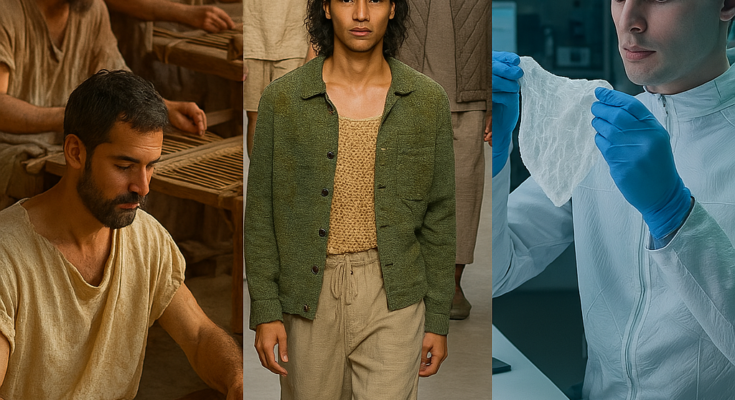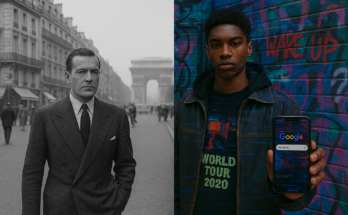Fashion: The Timeless Dialogue Between Culture, Identity, and Innovation
Fashion is humanity’s oldest love letter to self-expression. Far more than fabric draped over skin, it’s a language of identity, a mirror of cultural evolution, and a global industry shaping economies and art. From the linen robes of ancient Egypt to today’s algorithm-driven trends, fashion has woven itself into the very fabric of human history. Let’s unravel its threads—past, present, and future—and explore why what we wear speaks louder than words.
What Is Fashion?
Fashion is the collective heartbeat of clothing, accessories, and aesthetics that define eras, cultures, and individuals. It’s the visual vocabulary of societies—whether through the vibrant kimonos of Japan, the tailored suits of Savile Row, or the streetwear revolutionizing urban landscapes. Fashion thrives on reinvention, blending tradition with rebellion, practicality with fantasy.
A Walk Through Time: Fashion’s Evolution
Ancient Threads:
- 3000 BCE: Egyptian linen tunics symbolized status and spirituality, while Roman togas broadcasted citizenship.
- Function First: Animal hides and woven grasses shielded early humans from the elements, prioritizing survival over style.
Medieval Mastery:
- Class Divides: Silk, velvet, and intricate embroidery became armor for nobility, while peasants wore rough wool and linen.
- Religious Influence: Modesty-driven designs dominated, like the flowing abayas of the Middle East and European corsets.
Modern Metamorphosis:
- Industrial Revolution: Sewing machines democratized fashion; department stores birthed consumer culture.
- 20th-Century Icons: Coco Chanel liberated women from corsets, while denim became the uniform of rebellion.
- Tech-Infused Today: 3D-printed dresses, lab-grown leather, and AI-designed patterns push boundaries.
Why Fashion Matters
- Identity & Empowerment:
- Your wardrobe is your manifesto. A punk’s leather jacket, a CEO’s power suit, or a drag queen’s sequined gown—each declares, “This is who I am.”
- Cultural Preservation:
- The Maasai’s red shúkà, India’s sarees, and Scotland’s tartans safeguard heritage in a globalized world.
- Economic Powerhouse:
- A $2.5 trillion industry employing 75 million people—from cotton farmers to Instagram influencers.
- Art in Motion:
- Designers like Alexander McQueen and Iris van Herpen turn runways into galleries, blending sculpture with storytelling.
The Many Faces of Fashion
- Traditional: Ceremonial garments like the Korean hanbok or Nigerian agbada celebrate roots.
- Haute Couture: Handcrafted luxury (think $30,000 Dior gowns) for the 0.1%.
- Streetwear: Hoodies, sneakers, and hype culture—where TikTok teens and billion-dollar brands collide.
- Sustainable: Organic cotton, recycled polyester, and circular fashion models rewriting the industry’s ethics.
Fashion’s Double-Edged Influence
- The Good:
- Uniting Cultures: K-pop idols sport Thom Browne; Nigerian prints grace Paris runways.
- Driving Change: Vegan leather and gender-neutral collections challenge norms.
- The Ugly:
- Fast Fashion’s Toll: 92 million tons of textile waste yearly, fueled by $5 t-shirts.
- Body Image Pressures: Airbrushed ads and “one-size-fits-none” standards fuel insecurities.
Challenges & The Road Ahead
- Sustainability Revolution:
- Brands like Patagonia and Stella McCartney pioneer regenerative agriculture and zero-waste designs.
- Tip: Rent outfits via apps like Rent the Runway—own less, wear more.
- Tech Meets Thread:
- Smart fabrics monitor health; NFTs authenticate limited-edition sneakers.
- Inclusivity Rising:
- Adaptive clothing for disabilities, size-inclusive lines, and campaigns celebrating aging skin.
Your Closet, Your Legacy
Every purchase is a vote. Opting for a thrifted jacket over a mass-produced one, or supporting Indigenous artisans, reshapes the industry. Fashion isn’t frivolous—it’s a force. As Vivienne Westwood urged: “Buy less, choose well, make it last.”



